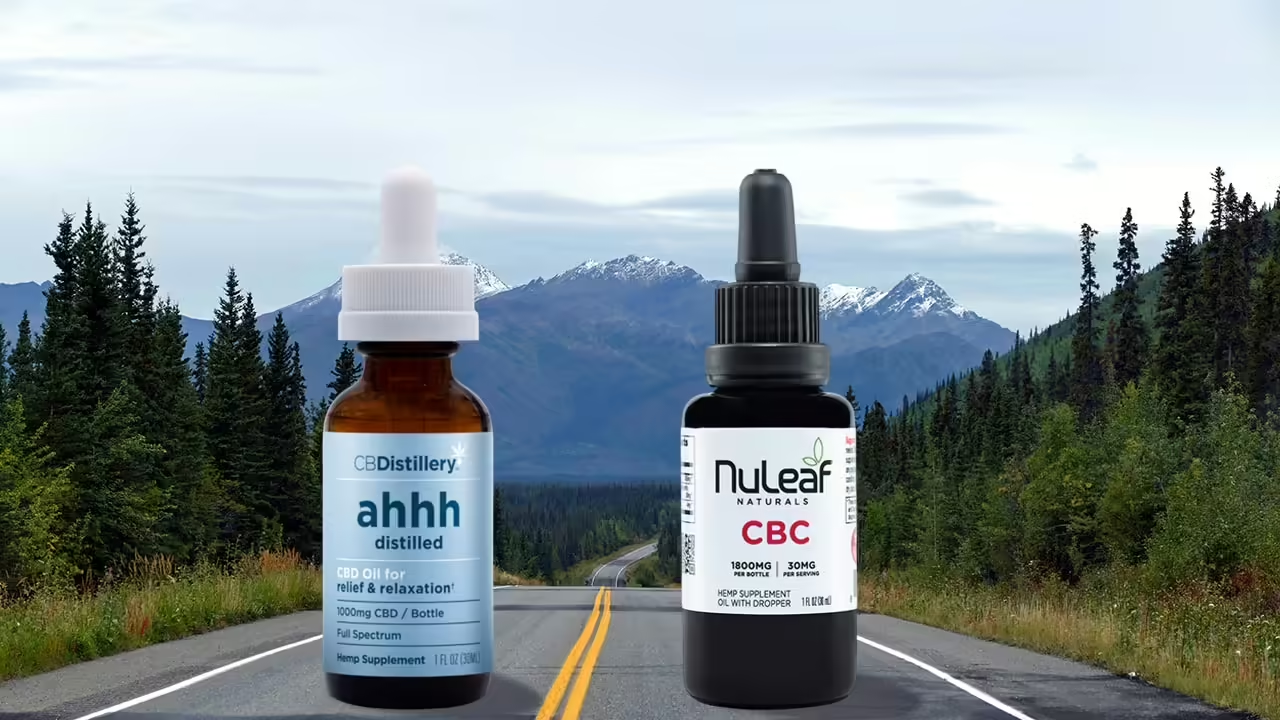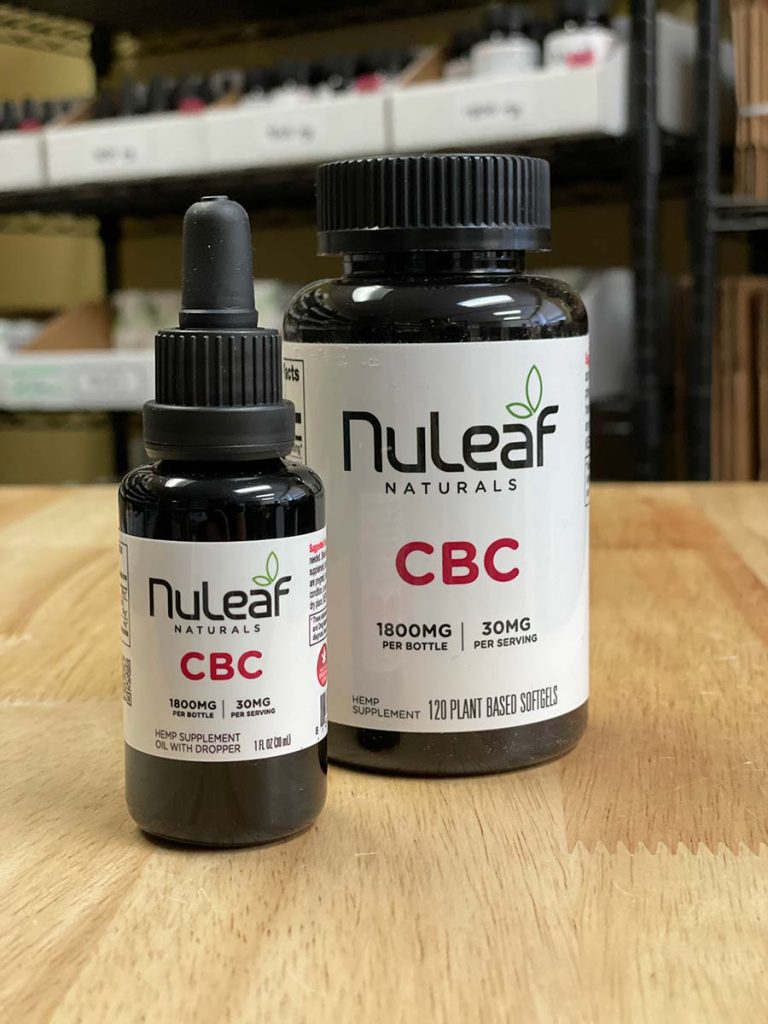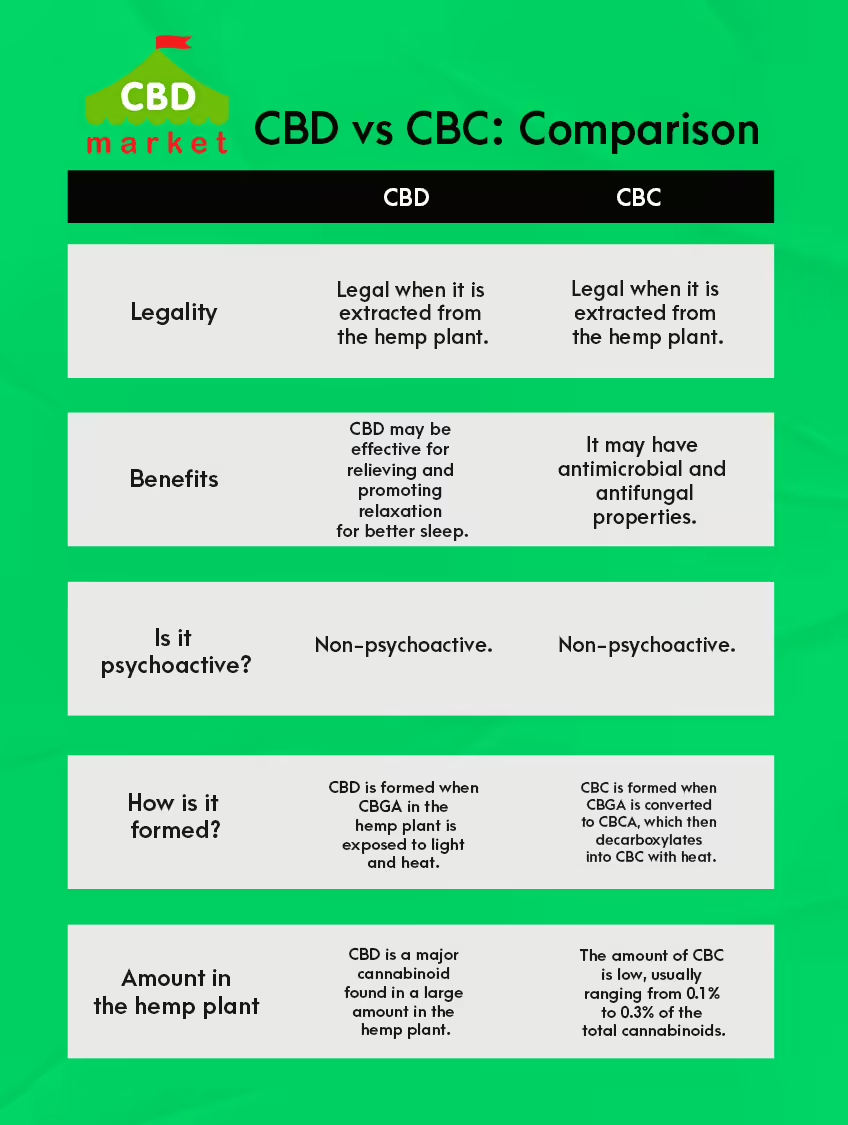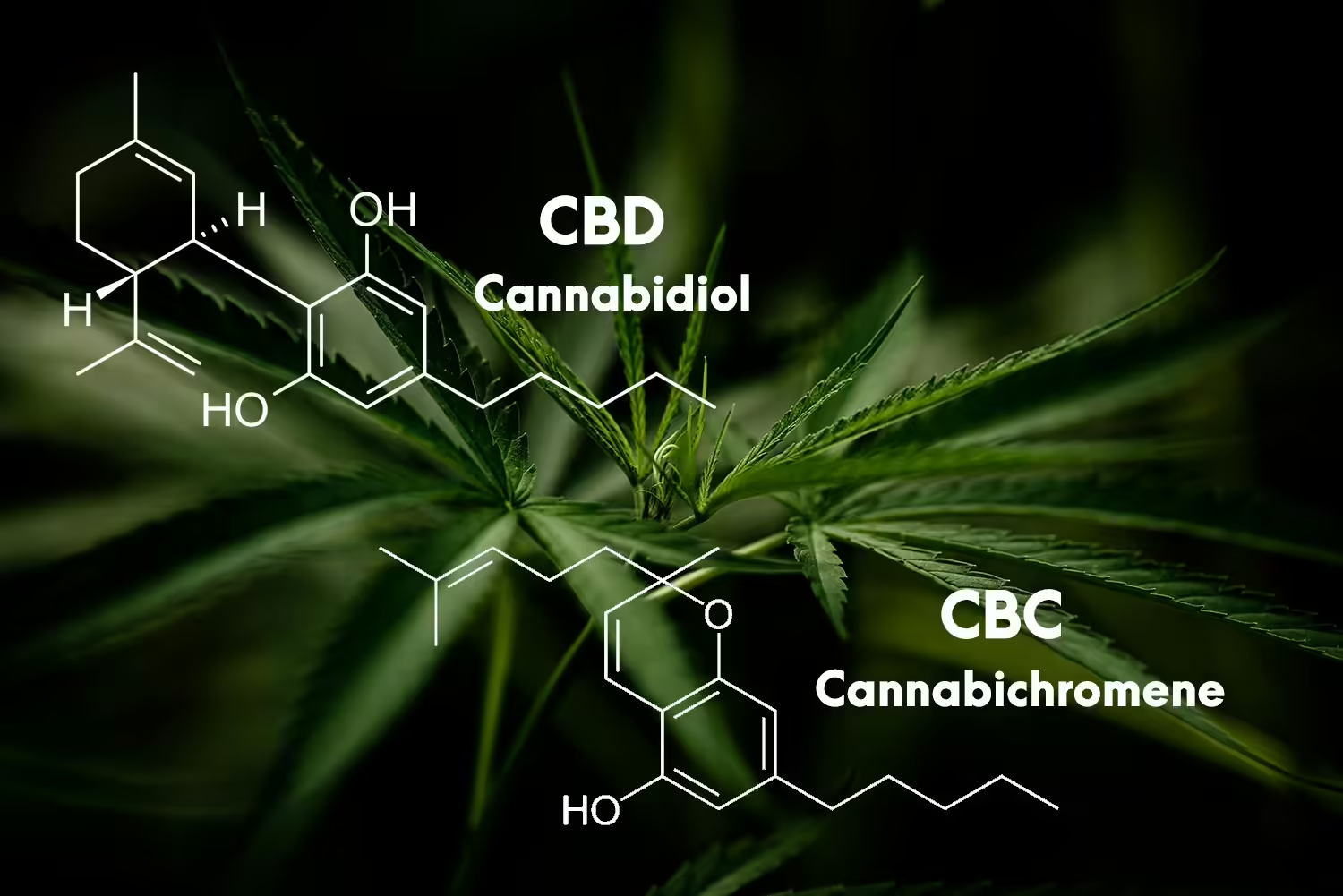CBD Vs. CBC: What Are the Differences?
Summarize

As clinical researchers investigate various cannabinoids discovered in the hemp plant, they are learning that more than the CBD cannabinoid has the potential to deliver positive health effects. One of those cannabinoids is CBC.
CBC shares some similarities with CBD, but what is the difference between them? There is more than one difference, including the molecular structural arrangement and how they work in the body to produce their effects.

TL;DR (Too Long; Didn’t Read):
CBD and CBC are cannabinoids in the cannabis plant. When comparing CBC vs. CBD, you learn they have the same chemical formula but different structural arrangements. The structural difference between CBD and CBC determines how each cannabinoid interacts in the body.
CBD interacts with but does not bind to CB1 and CB2 receptors in the endocannabinoid system, inhibiting endocannabinoid levels and other effects. CBC has demonstrated that it may activate CB2 receptors but seems to interact mainly with the TRP channels responsible for sensory responses. Combined, CBD and CBC may offer the entourage effect by working synergistically.
Table of Contents
What is CBD?
CBD (cannabidiol) is a compound found naturally in the cannabis plant. Legal CBD is extracted from Cannabis sativa, which are cannabis plants specially cultivated to contain no more than 0.3% THC on a dry-weight basis. These cannabis plants are called hemp to differentiate them from cannabis.
The endocannabinoid system (ECS) is a network of cellular receptors and chemical signals found in the central nervous system (CNS) and the peripheral nervous system (PNS). The largest number of receptors in the endocannabinoid system are CB1 and CB2.
CBD does not bind directly to these receptors. It interacts with them and other neurotransmitters like TRPV (transient receptor potential vanilloid), which are involved in physiological processes and PPARy (peroxisome proliferator-activated receptors) that regulate cellular functions like the immune system. Other molecular targets of CBD include GABA (a neurotransmitter that blocks signals in the central nervous system), which may produce a calming effect, and 5-HY receptors (serotonin). Because of its structure, CBD’s interactions mean it works as an agonist, antagonist, allosteric modulator, or inhibitor of various receptor activities. These scientific terms describe the type of influence a compound has on multiple receptors.
CBD influences CB1 and CB2 receptor actions. It increases the levels of the body’s endocannabinoids (anandamide and 2-AG) by slowing down their degradation. This increases endocannabinoid availability by modulating enzymes like FAAH and MAGL.
CBD is an agonist for some TRP channels and an antagonist for others. An agonist is a molecule that interacts with a particular receptor on a cell, leading to receptor activation; this leads to a response mimicking the body’s natural signaling. As an antagonist, CBD interacts with cannabinoid receptors and prevents their activation. For example, some research has found CBD may reduce the THC effects through its interaction with CB1 receptors. This adds to researchers’ many impacts, indicating CBD may affect biological responses through multiple receptor actions.
CBD also positively affects serotonin receptors. It has been studied for its potential as a therapeutic for promoting relaxation.
The main takeaway is that CBD, one of the primary cannabinoids in the hemp plant, interacts with the body’s systems in complex ways. It has shown potential as a therapeutic tool for addressing many health issues like sleep quality, immune system functioning, etc.
What is CBC?
CBC (cannabichromene) is another cannabinoid found in a smaller amount in the cannabis plant. CBC, like CBD, has a low binding affinity to CB1 but is a stronger agonist for CB2 receptors. However, researchers have demonstrated that CBC’s main action is its interaction with neurotransmitters involved in discomfort. It appears to be a weak inhibitor of MAGL (an enzyme involved in tissue swelling) and a strong activator and desensitizer of TRP channels (TRPA1 and TRPV1) involved in discomfort. It binds directly to the TRPV1 in the central nervous system. Due to these interactions, CBC may be an effective way to block discomfort signals.
CBC research is in its early stages, so little is known definitively about it yet. There are also conflicting research results. However, the potential of CBC to provide positive effects is gaining increasing interest from researchers. Comparing THC vs. CBC, CBC is not psychoactive. THC binds to CB1 receptors in the ECS, producing the high. CBC interacts mainly with CB2 receptors.
CBD vs. CBC: What are the Differences?

In summary, the differences between CBD and CBC are as follows:
- CBC has an affinity to vanilloid receptors (TRPA1 and TRPV1), which are involved in discomfort perception, so it may have a stronger effect on reducing it than CBD.
- CBD and CBC influence the endocannabinoid systems in different ways. CBD indirectly affects the CB1 and CB2 receptors and interacts with 5-HT1A receptors in the brain and receptors in the immune system.
- There are other differences in potential effects. For example, CBD may promote sleep quality, while CBC may be the more effective antimicrobial and antifungal compound.
- CBC is less abundant in the cannabis plant, so it is more difficult to extract.
- CBD is more extensively researched than CBC. Much more research is needed on CBC to understand its effects.
- Consumers are more familiar with CBD.
- CBD and CBC have different molecular structures.
As more research is conducted on CBD and CBC, more will be learned about the effects of the cannabinoids.
CBD vs. CBC: What are the Commonalities?
CBD and CBC are both cannabinoids, so they have some things in common.
- One reassuring fact about both CBD and CBC is that they are non-intoxicating and non-addictive. This means you can explore their potential health benefits without the risk of getting high or developing a dependency, providing a sense of safety and confidence in their use.
- Both are found in the hemp plant.
- Both are naturally derived from CBGa, the mother cannabinoid in the hemp plant.
- Both may relieve discomfort, though to different degrees.
- Neither are associated with severe side effects.
- CBD and CBC may enhance their effects through the “entourage effect.” This effect refers to the synergistic interaction of different cannabinoids and terpenes, aromatic compounds found in cannabis, to produce a more significant combined impact than they could alone. This means that when CBD and CBC are used together, they may have a more potent effect than when used individually.
- They have a similar chemical makeup.
CBD vs. CBC Cannabinoid Structure
CBD has a chemical structure made of carbon, hydrogen and oxygen. It has a hydroxyl (OH) group attached to a carbon atoms arrangement, creating an open ring structure (C21H30O2).
A cannabinoid is a chemical substance with a 21-carbon-atom terpene phenolic (plant terpenes plus phenols) structure. This indicates that the chemical can interact with cannabinoid receptors. It is a phytocannabinoid, meaning it occurs naturally in cannabis plants versus endocannabinoids or neurotransmitters the body naturally produces.
A chemical structure has a profound impact on its effects on the body. CBC has the same elements as CBD but is structured differently, meaning it does not bind to or interact with various receptors similarly. Its molecular formula is also C21H30O2, but the molecules are arranged differently, i.e., an OH group is in a different place. It has a closed-ring system.

CBC’s ability to bind directly to specific TRP receptors in the nervous system suggests it may have a greater soothing effect than CBD. On the other hand, CBD may be better in reducing swelling compared to CBC because of its interaction with CB1 and CB2 receptors and inhibition of enzymes that break down endocannabinoids for cell uptake, part of your body’s natural regulation process.
Despite these suppositions as to which has the more potent effect, both CBD and CBC are believed to have the potential to have soothing effects.
Is CBC Legal?
The legality of CBC is based on its source and the type of product.
CBC is legal at the federal level if it is extracted from the hemp plant because hemp has less than .3% THC. Any product made from hemp is federally legal.
CBD products containing CBC are legal as well, and CBC extracted from hemp is legal.
However, many states have passed laws and implemented regulations concerning the legal status of CBD. Each state is different. For example, some have legalized marijuana, and others only allow state-licensed dispensaries to sell marijuana products. These products may contain other cannabinoids like CBC.
Generally, products containing more than .3% THC are sold through medical marijuana dispensaries. CBC is legal at the federal and state level in that case.
CBC Benefits vs. CBD — Which Should I Choose?
Since the research on CBD is scarce, most people choose a CBD product that has CBC in a greater amount than would naturally occur in the hemp plant. Both CBD and CBC have been shown to have soothing effects. Both cannabinoids may elevate mood by promoting relaxation. CBD with CBC may produce the entourage effect, meaning the cannabinoids work synergistically.
FAQs
Is CBC or CBD Better?
When it comes to cannabinoids, it is not a case of one being better than the other. All cannabinoids demonstrate that they may support wellness in one way or another. However, many CBD clinical trials show it has potential positive effects, such as improved sleep quality, elevated mood, and more.
A small amount of research on CBC has found that it may also have soothing effects and perhaps even stronger potential to reduce discomfort. The study is not definitive yet on which cannabinoid has more effects.
Is CBC Psychoactive?
CBC, like CBD, is not psychoactive. It will not cause you to feel “high.” It is due to its molecular structure that determines how it interacts with various receptors in the ECS system.
Can I Take CBD and CBC Oil together?
Yes, you can take CBD and CBC oil together. When you consider CBC and CBD oils, the full spectrum and broad spectrum CBC oils are blended with other cannabinoids, like CBD and CBG. You can also buy CBD products like oils or gummies formulated with extra CBC.
The concentrated full spectrum CBC oil used as tinctures, gummies or capsules contains all the cannabinoids, including CBD, terpenes, flavonoids and other natural compounds the hemp plant contains. The broad spectrum CBC oils are the same except THC, which is removed during processing.
How Does CBC Make You Feel?
Since CBC is not psychoactive, you will not feel high. It may make you feel mellow or relaxed or improve your mood. However, since CBC products contain other hemp plant compounds, it is impossible to attribute effects strictly to CBC. Each person has a unique biology, so it is always recommended to start with a low-potency product and increase the amount over time until you feel the desired effects.
Power of Cannabinoids
With each new clinical study, the potential power of cannabinoids to contribute to human health and wellness is demonstrated. A survey found that 25% of participants are routinely using CBD products or interested in trying them. This reflects that CBD has been well-studied as a therapeutic agent. A different study found that people who use or have used CBD are more likely to utilize an emerging cannabinoid. That makes sense because so many wellness issues are still not fully addressed with traditional medicines, plus cannabinoids are natural products.
Sources
- Jiangling Peng, Mingjie Fan, Chelsea An, Feng Ni, Wendong Huang, Jiankang Luo. A narrative review of molecular mechanism and therapeutic effect of cannabidiol (CBD). BCPT (Basic & Clinical Pharmacology & Toxicology). 2022; 26 January. https://onlinelibrary.wiley.com/doi/10.1111/bcpt.13710
- Rob Kress, RPh. Clearing the Confusion on CBD. Clinical Insights. 6 July 2020.
https://www.rn.com/blog/clinical-insights/clearing-cbd-confusion/ - Leila Etemad, Gholamreza Karimi, Mohaddeseh Sadat Alavi, Ali Roohbakhsh. Pharmacological effects of cannabidiol by transient receptor potential channels. Life Sciences. 2022.
https://www.sciencedirect.com/science/article/abs/pii/S002432052200282X - Erica N Peters, Laura MacNair, Irina Mosesova, Uwe Christians, Cristina Sempio, Jost Klawitter, M. Hunter Land, Mark A Ware, Cynthia Turcotte, Marcel O Bonn-Miller. Pharmacokinetics of cannabichromene in a medical cannabis product also containing cannabidiol and Δ9-tetrahydrocannabinol: a pilot study. Eur J Clin Pharmacol. 2021; 78(2):259–265.
https://pmc.ncbi.nlm.nih.gov/articles/PMC8748343/ - Molecular Formula Search for Cannabichromene (C21H30O2).
https://pubchem.ncbi.nlm.nih.gov/#query=C21H30O2 - Nadia Martinez Naya, Jazmin Kelly, Giuliana Corna, Michele Golino, Antonio Abbate, Stefano Toldo. Molecular and Cellular Mechanisms of Action of Cannabidiol. Molecules. 2023; 28(16):5980.
https://pmc.ncbi.nlm.nih.gov/articles/PMC10458707/ - Cannabichromene. https://pubchem.ncbi.nlm.nih.gov/compound/Cannabichromene
- Adrianne R. Wilson-Poe, PhD, Tristin Smith, MPH, Michael R. Elliott, PhD, et al. Past-Year Use Prevalence of Cannabidiol, Cannabigerol, Cannabinol, and Δ8-Tetrahydrocannabinol Among US Adults. JAMA Netw Open. 2023; 6(12). https://jamanetwork.com/journals/jamanetworkopen/fullarticle/2812825
Share this post


0